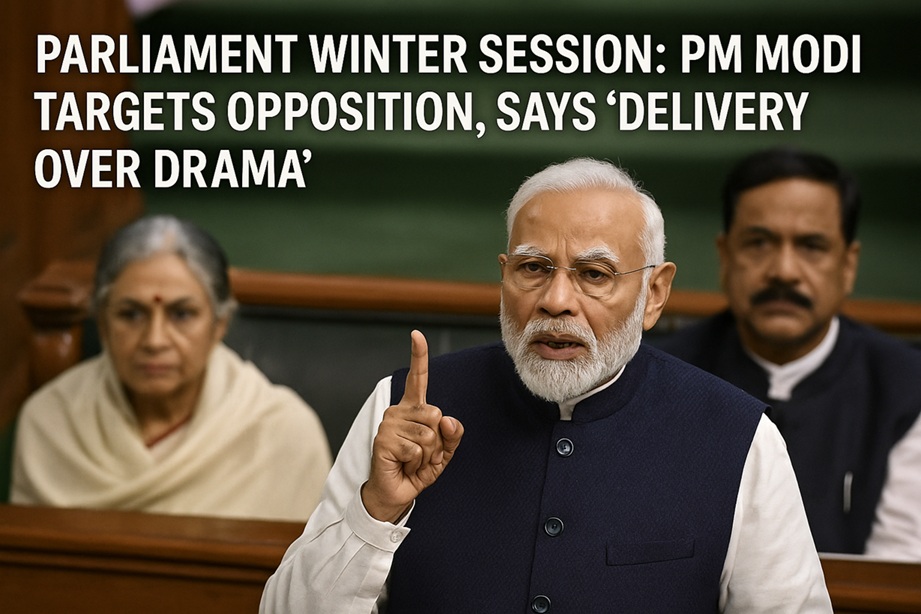In a failed escalation attempt, Pakistan launched multiple drone and missile attacks on Indian military assets, including a targeted strike near the Jammu airport. India’s advanced air defense network, including the Russian-built S-400 system, neutralized the threats swiftly. Additional drones attempting to infiltrate Jammu were also shot down mid-air.
This aggression prompted a powerful and immediate response under Operation Sindoor — a calculated military campaign by India aimed at dismantling Pakistan’s terrorist infrastructure. Within 24 hours, Indian forces reportedly destroyed nine major terror bases across Pakistan-occupied territory, eliminating over 100 militants. However, the Indian government has confirmed that the operation is ongoing, with the possibility of further escalations.
In an emotionally charged address, Prime Minister Narendra Modi reviewed all major terrorist attacks on Indian soil from the 2008 Mumbai attacks to the recent killings in Pahalgam. Within minutes, strategic decisions were made, leading to one of the most significant Indian military offensives in decades.
Pakistan’s Provocation: A Miscalculated Move
On May 8, Pakistan attempted to breach Indian airspace with a series of coordinated drone and missile attacks. One of the targets — the high-security zone near Jammu airport — was intercepted mid-air by India’s cutting-edge air defense systems, including the Russian-made S-400 Triumf. Simultaneously, additional drones attempting to infiltrate through Punjab and Jammu were neutralized, thanks to a well-coordinated defense grid.
According to defence officials, this was not a standalone incident. Pakistan reportedly launched missiles aimed at 15 Indian cities, including sensitive urban and military targets across Gujarat, Rajasthan, Punjab, and J&K. However, India’s multi-layered defense shield — comprising S-400s, Akash missiles, and Israel’s Iron Dome-inspired systems — rendered these attacks largely ineffective.
India’s Response: Launch of Operation Sindoor
Within hours, India responded with Operation Sindoor, a precision military campaign designed to dismantle Pakistan’s terror infrastructure. By the end of the first 24 hours:
Nine major terror bases in Pakistan-occupied territory were obliterated.
Over 100 militants, including high-ranking handlers, were eliminated.
Coordinated drone strikes and missile launches were carried out targeting key terror hubs, radar systems, and air defense installations.
Operation Sindoor was greenlit following an emergency high-level review led by Prime Minister Narendra Modi, who revisited the long history of cross-border terrorism — from the 2008 Mumbai attacks to the recent Pahalgam killings.
Air and Naval Superiority: India Dominates the Sky and Sea
India’s air force unleashed a series of precision drone strikes, primarily using Israeli-made Harop drones, manufactured under the “Make in India” initiative in collaboration with the Adani Group. These drones were instrumental in:
Destroying LY-80-based radar systems imported from China.
Blinding Pakistan’s surveillance infrastructure.
Silently eliminating targets without triggering early-warning systems.
In a bold show of maritime strength, INS Vikrant, India’s first indigenous aircraft carrier, led a naval strike on Karachi. Along with INS Kolkata and other destroyers, the strike force:
Targeted the Ormara Naval Base.
Hit strategic installations at Karachi Port.
Crippled Pakistan’s coastal defense systems.
Satellite imagery confirmed widespread fires and structural devastation in Karachi and nearby installations, signaling the depth of India’s sea-based offensive capabilities.
Tactical Edge: India’s Use of Harop Drones and Foreign Bases
The Harop loitering munitions proved to be the game-changers. With electro-optical sensors, anti-radiation homing, and stealthy ingress, these drones delivered pin-point strikes on Pakistani radar and missile batteries, severely crippling their air defenses.
Defense analysts also point to the strategic use of Gissar Air Base in Tajikistan, just 400 km from Pakistan’s western front. Though unconfirmed officially, this move illustrates India’s expanding reach and growing partnerships in Central Asia.
Pakistan’s Failures and Internal Chaos
Following the Indian offensive, Pakistan’s internal situation spiraled:
Nationwide blackouts were reported, especially in Islamabad, Lahore, and Peshawar.
Internet and mobile networks collapsed, likely due to electronic warfare or infrastructure damage.
Mass evacuations occurred as panic gripped urban centers.
Two Pakistani fighter jets — an F-16 and a JF-17 — were shot down, with pilots either captured or confirmed dead.
Pakistan scrambled for diplomatic support, reaching out to Iran, Saudi Arabia, and Turkey. However, India’s Foreign Minister S. Jaishankar made it clear: “This is not a war — this is a reckoning. Pakistan must dismantle terror networks or face the consequences.”
International Reactions and Strategic Implications
While the United Nations, European Union, and other global powers urged restraint, there has been a notable absence of strong condemnation against India. In fact, many view the retaliation as justified in the face of continued cross-border terrorism.
India’s assertive stance signals a new doctrine — one that aligns with the growing global consensus that state-sponsored terrorism cannot be tolerated.
What’s Next: Operation Sindoor Continues
With Pakistan’s bluff called and its retaliatory capacity largely neutralized, the ball remains in India’s court. The Indian government has made it clear — Operation Sindoor is not over. The Indian military has been given a free hand to act, and further strategic strikes are expected.
India’s resolve is unambiguous: terror will not go unanswered, and this time, the fight is to the finish. As Defense Minister Rajnath Singh reportedly said, “This time, there will be no turning back. The unfinished business of 1971 must be completed.”
A Turning Point in South Asian Geopolitics
Operation Sindoor is not merely a military retaliation — it marks a decisive shift in India’s strategic doctrine. Through this operation, India has delivered a clear message to its adversaries, the region, and the global community: terrorism will be met with uncompromising and overwhelming force.
For Pakistan, this could be a moment of reckoning. For India, it is a bold declaration — the age of strategic restraint is over. National security will now be pursued with clarity, conviction, and zero tolerance.
#insvikrant #indiapakistanwar #IndiaPakFaceoff #indiannavy #pakistan #kashmir #indiapakistantension #indiapakistanwar #IndiaAvengesPahalgam #IndiaStrikesPakistan #IndiavsPakistan #OperationSindoor #indiamissile #DefendOurForces #pahalgamavenged #Jammukashmir #pahalgamattack





